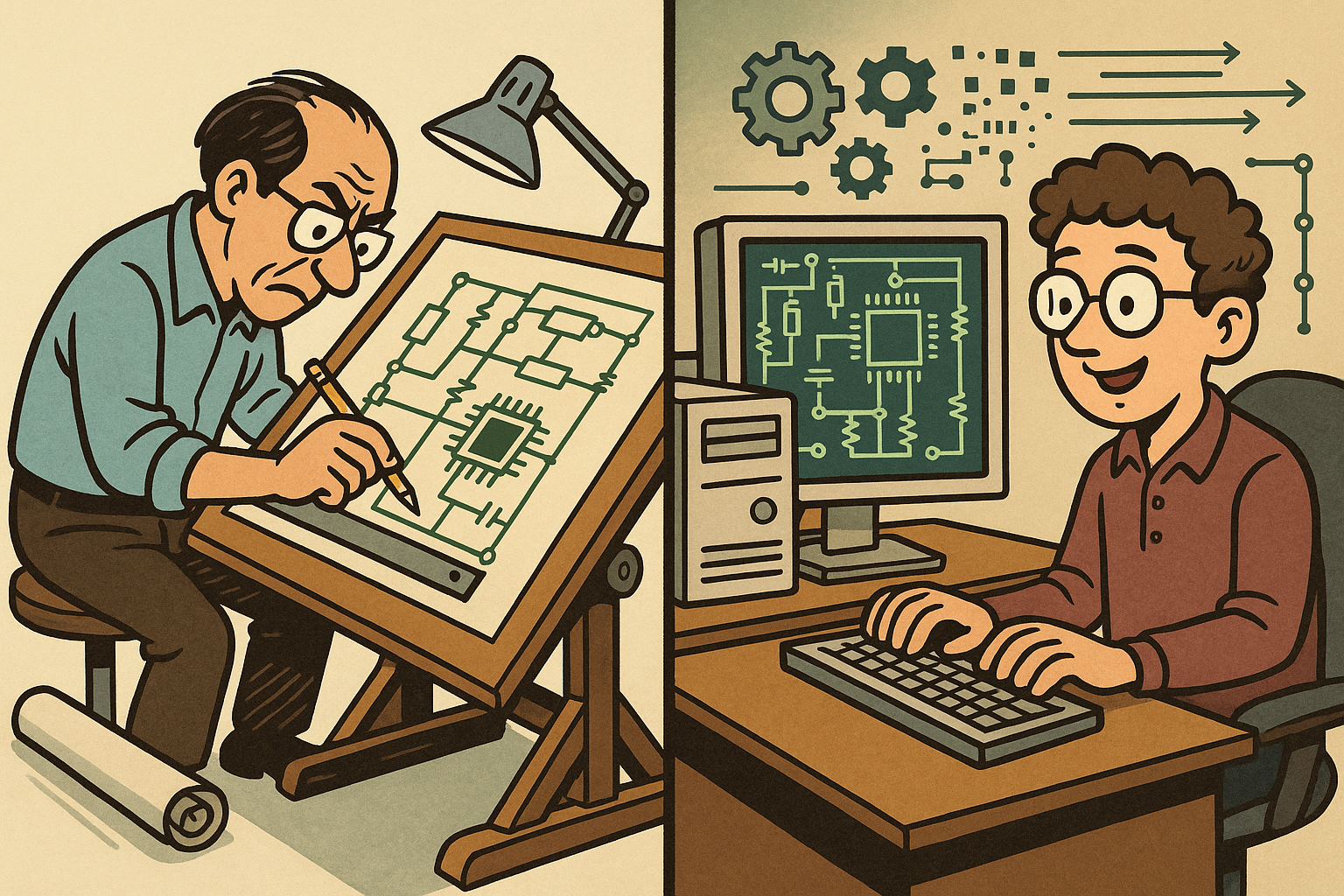Your Cart is Empty
Customer Testimonials
-
"Great customer service. The folks at Novedge were super helpful in navigating a somewhat complicated order including software upgrades and serial numbers in various stages of inactivity. They were friendly and helpful throughout the process.."
Ruben Ruckmark
"Quick & very helpful. We have been using Novedge for years and are very happy with their quick service when we need to make a purchase and excellent support resolving any issues."
Will Woodson
"Scott is the best. He reminds me about subscriptions dates, guides me in the correct direction for updates. He always responds promptly to me. He is literally the reason I continue to work with Novedge and will do so in the future."
Edward Mchugh
"Calvin Lok is “the man”. After my purchase of Sketchup 2021, he called me and provided step-by-step instructions to ease me through difficulties I was having with the setup of my new software."
Mike Borzage
Revolutionizing Architecture: Integrating BIM with IoT for Smart Buildings and Predictive Maintenance
September 08, 2024 4 min read


Introduction to BIM and IoT Integration
Building Information Modeling (BIM) is a digital representation of the physical and functional characteristics of a facility. It serves as a shared knowledge resource for information about a facility, forming a reliable basis for decisions during its lifecycle from inception onward. The Internet of Things (IoT), on the other hand, refers to the network of physical objects embedded with sensors, software, and other technologies to connect and exchange data with other devices and systems over the internet. The synergy between BIM and IoT lies in the real-time data IoT provides, which can be integrated into BIM models to enhance their utility and accuracy.
BIM has evolved significantly over the years. Initially, it was used primarily for 3D modeling and design visualization. Over time, its capabilities expanded to include 4D scheduling and 5D cost estimation, making it an indispensable tool in the construction industry. Parallelly, the rise of IoT has seen its application in various sectors, from smart homes to industrial automation, providing unprecedented levels of data and connectivity.
The integration of IoT data into BIM is transformative because it enables the creation of dynamic, data-driven models that reflect the real-time status of the physical world. This integration leads to enhanced data accuracy, real-time monitoring, and predictive maintenance, among other benefits. By converging these technologies, stakeholders across the building lifecycle—from architects and engineers to facility managers and occupants—can make more informed decisions that improve efficiency, safety, and sustainability.
Technical Architecture of IoT-BIM Integration
The integration of IoT and BIM involves a complex technical architecture that comprises several key components and infrastructure elements. The primary components include IoT sensors, which collect data from the environment; data collection hubs, which aggregate and preprocess this data; and BIM software, which uses the data to update and enhance the digital models.
Network and connectivity requirements are critical to the success of IoT-BIM integration. Reliable and robust connections, such as Wi-Fi and the emerging 5G technology, are necessary to ensure the seamless flow of data between sensors and BIM platforms. The choice of network depends on factors like data volume, transmission frequency, and the physical layout of the building or site.
IoT data is collected through a variety of sensors that measure parameters such as temperature, humidity, occupancy, and energy consumption. This data is transmitted to data collection hubs, which may be located on-site or in the cloud. From there, the data is integrated into BIM models, either in real-time or at scheduled intervals. Cloud storage solutions are often preferred for their scalability and accessibility, although on-premise storage may be chosen for reasons of security or compliance.
Within BIM platforms, tools for data visualization allow users to interact with and analyze the integrated IoT data. These tools can display real-time sensor readings, historical data trends, and predictive analytics, providing a comprehensive view of the building's performance.
Middleware and APIs play a crucial role in facilitating communication between IoT devices and BIM software. They act as intermediaries that standardize and translate data formats, ensuring that information flows smoothly and accurately between systems. Several software solutions and platforms support IoT-BIM integration, offering features like automated data synchronization, advanced analytics, and customizable dashboards.
Applications and Use Cases
IoT-enabled smart buildings are a prime example of how BIM and IoT can be leveraged together. These buildings use a network of sensors to monitor and manage various systems, such as HVAC, lighting, and security. By integrating this data into BIM models, facility managers can optimize energy consumption, improve operational efficiency, and enhance security.
In the realm of construction management, real-time monitoring of construction sites using IoT data provides significant benefits. Sensors can track parameters such as equipment usage, material stock levels, and environmental conditions. This data helps project managers make informed decisions that improve project timelines, resource allocation, and overall site safety.
Facility management also benefits from the integration of IoT and BIM. Predictive maintenance of critical building systems, such as HVAC and lighting, becomes possible through the analysis of sensor data. Real-time fault detection and automated alerts enable quick responses to potential issues, reducing downtime and maintenance costs.
Challenges and Future Directions
Despite the numerous benefits, the integration of IoT and BIM faces several technical challenges. Interoperability and standardization issues arise from the diverse range of sensors, devices, and software solutions used. Ensuring that these components can communicate effectively requires the development and adoption of industry-wide standards.
Data security and privacy concerns are also significant. The large volumes of data generated by IoT devices can be sensitive, necessitating robust security measures to protect against breaches and unauthorized access. Additionally, compliance with data protection laws, such as GDPR, is essential to avoid legal repercussions.
Scalability and data overload are further challenges. As the number of IoT devices in a building increases, so does the volume of data they generate. Efficient data management and storage solutions are required to handle this influx without compromising performance.
Regulatory and compliance considerations play a crucial role in IoT-BIM integration. National and international regulations can impact the deployment and operation of IoT devices, influencing factors such as data collection, storage, and transmission. Staying abreast of these regulations and ensuring compliance is vital for the successful implementation of IoT-BIM projects.
Looking to the future, several trends and innovations are poised to enhance IoT-BIM integration. Emerging technologies like artificial intelligence and machine learning are expected to bring new capabilities in data analysis and predictive modeling. The rollout of 5G networks will enable more robust and real-time data integration, supporting more advanced applications.
Predictions for the future of smart cities and IoT-enabled infrastructure are optimistic. As urbanization continues to rise, the demand for intelligent, connected buildings will grow. IoT-BIM integration will play a pivotal role in creating sustainable, efficient, and resilient urban environments, driving innovation and improving quality of life.
Also in Design News

Embracing Data-Driven Design: Revolutionizing Product Development with Advanced Analytics
October 02, 2025 12 min read
Read More
Design Software History: Early Electronics CAD: From Manual Drafting to Algorithm-Driven Design and Its Impact on the Industry
October 02, 2025 10 min read
Read More
Cinema 4D Tip: Streamline Scene Management in Cinema 4D with the Stage Object
October 02, 2025 3 min read
Read MoreSubscribe
Sign up to get the latest on sales, new releases and more …


